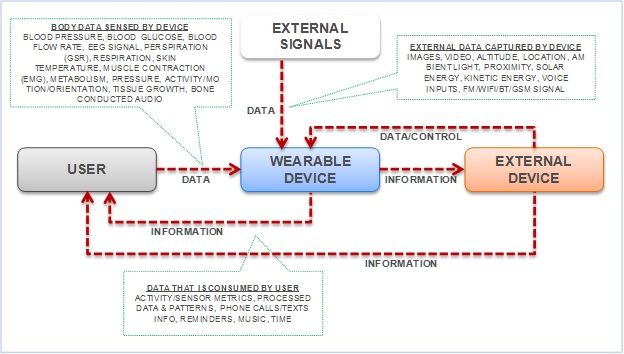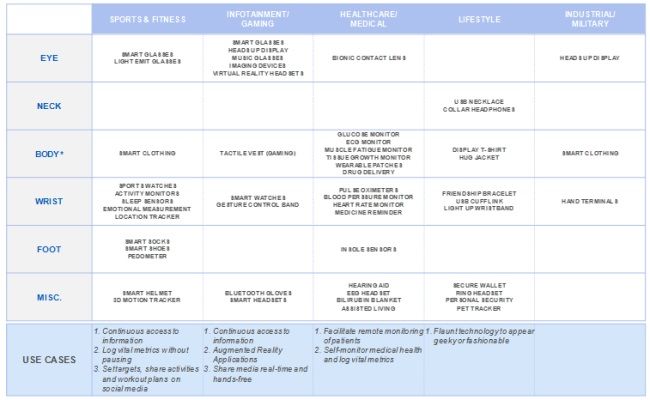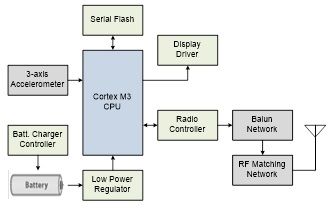Wearable devices are widely recognized for their high penetration in many mature markets and the widespread use of lower cost MEMS sensors. Wearable devices are highly portable, can be worn or attached to the body, and measure/acquire information through one or more sensors. Figure 1 shows a general information flow diagram for a wearable device.

Figure 1: Wearables - Information Process
We broadly classify wearable devices based on service segments or wearables. Table 1 shows the types and typical use cases of wearable devices.

Table 1: Classification of wearable devices (* Body: including arms, torso and legs)
Most wearable devices come with one or more sensors, processors, memory, connectors (radio controllers), displays, and batteries. Figure 2 shows an example of an activity monitor.

Figure 2: Block Diagram - Activity Monitor (Wearable Device)
Because of the need to wear such devices on the body, in addition to the basic functions, there are other factors that determine whether the device can be accepted by consumers, including:
â—Supported communication modes
â— Average battery life
â— low cost
â— Product size and weight
These factors are detailed in the following sections.
Grain Bin Full Sensor,Grain Auger Full Bin Alarm,Grain Bin Full Alarm,Grain Bin Full Indicator
Changzhou Youeryou Trading Co., Ltd. , https://www.farmpartssupplier.com